.
Well, there are limited amounts of information out there, regarding SR ITB technology and the bits and pieces of info that actually do exist, are hard to come by. This thread will be a compilation of everything I can find, relating to Individual Throttle Body Systems (with a focus on the Nissan SR20 platform).
In this thread I will include:
- ITB Theory (Complete with articles and other technical information)
- Images/Videos of different setups (Off the shelf and custom)
- Information on specific off the shelf manufactured kits (with prices and specs)
- ITB dyno results (vs regular plenum or other ITB setups)
* Hopefully all of the ITB experts of the world will feel compelled to contribute their knowledge to this thread. I would like to make this a one stop resource for everything SR20 ITB!!!
Feel free to contribute!!!
Let's Begin!
ITB = Individual Throttle Body (Also known as Independent Throttle Body)
SR specific and General ITB technical/theory (Articles):
Jenvey - ITB Theory (Link)
Individual Throttle Body Selection
Butterflies, Barrels or Slide Throttles
Why not just use a big single throttle body?
Miscellaneous
ITB The Way It Should Be - Import Tuner Magazine Circa 2008
Individual Throttle Bodies - Wrenchin' Circa 2009
ITB Related Discussion (Threads) From Various Forums:
http://www.sr20-forum.com/vvl/52225-2-0-ve-itb-dyno.html
http://www.sr20-forum.com/all-motor/11152-sr20-itbs-found.html
http://www.sr20-forum.com/vvl/61637-2-0-ve-dyno-testing.html
Available SR ITB setups
SR20VE
Hayward Performance (Link)
(British Columbia, Canada)
Application: SR16/20VE head (NEO VVL) (suitable for 2.0 L - 2.2 L)
Cost: $3300.00 USD
Manufacturer Description:
THIS SYSTEM IS ONLY AVAILABLE AS A COMPLETE UNIT, IF YOU NEED IT FOR AN INLINE DRIVE APPLICATION THEN STRAIGHT AIRHORNS CAN BE SUPPLIED. THE CARBON AIRHORNS ARE NEEDED TO FIT INTO THE FRONT WHEEL DRIVE ENGINE COMPARTMENT.
Custom Nissan SR20VE 30 HP increase over best previous intake system on a 2000 cc engine. Custom Carbon airhorns just for this Nissan system.

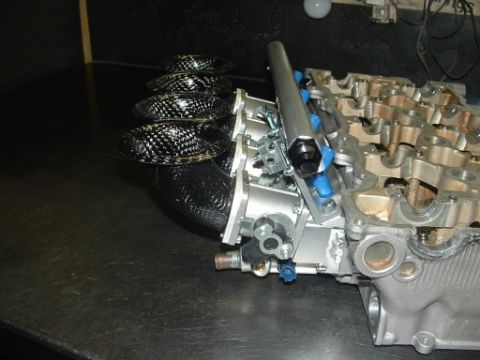
SR20DE/SR20DET
Hayward Performance (Link)
(British Columbia, Canada)
Application: SR20DE
Cost: $1800.00 USD
Additional Options: TPS / $80.00 USD
Manufacturer Description:
Package Includes
- Manifold
- 48mm straight bore throttles
- 90mm long airhorns
- Fuel rail and mounts
- Linkage
- Cable pull
- TPS (Optional for extra charge)
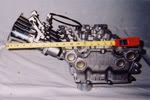
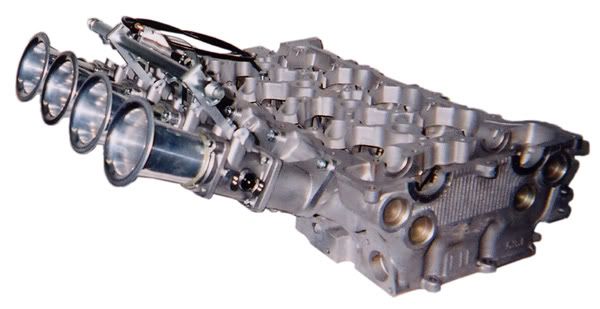
Extrudabody (Link)
(Florida, USA)
Application: SR20DE/SR20DET
Cost: $1499.00
Manufacturer Description:
The SR20DE/SR20DET kit is a bolt-on kit, it includes the manifold, 4 ITB's in either 45mm or 45mm Tapered to 50mm, 2 Base plates, Balancing Kit, Throttle Cam/Stop, Fuel Rail and mounting hardware, TPS and Mini Harness. our Standard Filters are also included, see them in the Air Delivery section. Note: the Manifold is 48mm and has a 1.5mm step from the ITB to the Manifold can be run as is or Porting the base like shown in the Pictures will increase flow and HP! Injectors are not included!
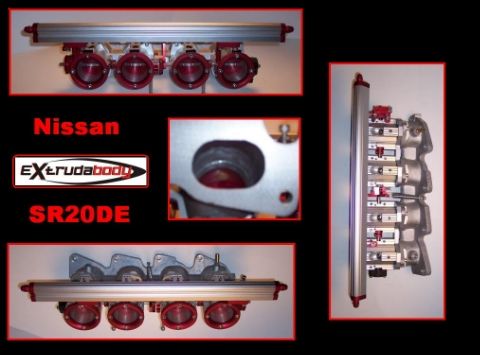
Jenvey (Link)
(England, UK)
Application: SR20DE
Cost: $1113 GBP (appx. $1710 USD)
Optional items:
Linkage Kit - $148.22, Linkage Brackets and Rod - $19.33, Hall Sensor/contactless TPS - $154.66, Air Filter - $122.44
Manufacturer Description:
Nissan SR20DE throttle body kit from Jenvey Dynamics includes four SF48/4.5/1 taper throttle bodies ( ITB's), a Jenvey Dynamics EFI inlet manifold, fuel rail and four 90mm long airhorns. Jenvey throttle bodies and all Jenvey throttle body accessories are engineered for Motorsport, offering excellent performance, reliability, lightness and value. This kit is ideal for road, track or rally use.This kit is for the SR20DE high port engine as used in the GTiR.Made to order - up to 2 weeks to dispatch.
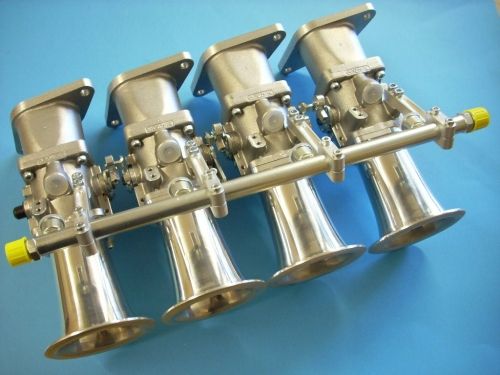
Tomei "4 Throttle System" (Link)
Application: SR20DE
Cost: $2640.00 USD (MSRP)
Manufacturer Description:
SR20 "4 Throttle System". Not just for looks! Enjoy the pleasures of quad open throttle bodies and the harmony they produce. The response and feel of the NA driveability and enjoyment.
- 45mm
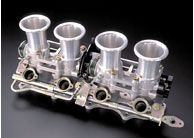

EFI Hardware (Link)
(Victoria, Australia)
Application: S13/S14 SR20 (and other)
Cost: $1400 AUD (appx. $1400 USD)
Manufacturer Description:
Tapered Bore Throttles have a clear advantage over Parallel Bore Throttles at increasing power and torque. By accelerating the air through a venturi (in this case a tapered bore) the air speed through the throttle body is increased. This enhances the engine cycle's scavenging effect to provide more air and fuel in the combustion chamber and therefore more power and torque.
The Tapered Bore has 3 sections:
Inlet from ram tube - 52mm
This then tapers down to a short parallel section for the throttle plate - 50mm
There is a second taper down to the outlet flange of the throttle body - 48mm
Kit includes:
- 2 x direct fit tapered bore throttle bodies 52/50/48
- fuel rail and mountings
- linkage
- 4 x ram tubes and bases
* note - injectors, fuel rail fittings and tps not included in kit price but can be supplied on request
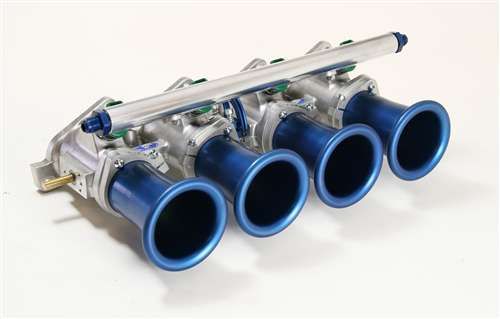
IKEYA FORMULA (ITB Kit Link) (Main site Link)
(Tochigi, Japan)
Application: S13, S14, S15 RWD SR20DET
Cost: 278,000 - 283,000 Yen (appx. $2730-2780 USD)
Manufacturer Description:
Increased air mass flow by turbo tuning will become resistance if normal throttle and surge tank are used. From these reasons behind:
- Review on the capacity and structure of surge tank to deliver the increased air mass flow to each combustion chamber effectively.
- to stabilize the even air suction system to each combustion chamber by having quadruplet throttle.
By solving these issues, it's made possible to produce smooth/ powerful force and torque in addition to clear engine responsiveness at high/middle revolution range.
Kit Includes:
-Surge tank x1 (3,000cc inlet diameter phi80)
-Throttle x2 (phi 45)
-Throttle linkages
-Delivery pipe x(50cc)
-AAC tank x1(200cc)
-Negative pressure hose
-Hose band
-Gasket
-Bolts and Nuts

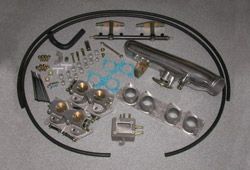
Additional manufacturers will be added soon....
Dyno Proven SR ITB setups (Horsepower numbers)
Info to come...
_______________________________________________
I am by no means an expert on this subject; I am learning along with everyone else.
This thread will be a work in progress and I will add information as I come across it. Feel free to add links to articles or set-ups that you have on you SR powered car. All information on this subject will help to advance our aging SR engines.
Feel free to post up dyno graphs (before and after results) of your ITB setup, along with the relevant engine/build specs. I will do my best to keep the first post(s) accurate and current.
Thanks.
Well, there are limited amounts of information out there, regarding SR ITB technology and the bits and pieces of info that actually do exist, are hard to come by. This thread will be a compilation of everything I can find, relating to Individual Throttle Body Systems (with a focus on the Nissan SR20 platform).
In this thread I will include:
- ITB Theory (Complete with articles and other technical information)
- Images/Videos of different setups (Off the shelf and custom)
- Information on specific off the shelf manufactured kits (with prices and specs)
- ITB dyno results (vs regular plenum or other ITB setups)
* Hopefully all of the ITB experts of the world will feel compelled to contribute their knowledge to this thread. I would like to make this a one stop resource for everything SR20 ITB!!!
Feel free to contribute!!!

Let's Begin!
ITB = Individual Throttle Body (Also known as Independent Throttle Body)
SR specific and General ITB technical/theory (Articles):
Jenvey - ITB Theory (Link)
Individual Throttle Body Selection
Butterflies, Barrels or Slide Throttles
Why not just use a big single throttle body?
Miscellaneous
ITB The Way It Should Be - Import Tuner Magazine Circa 2008
Individual Throttle Bodies - Wrenchin' Circa 2009
ITB Related Discussion (Threads) From Various Forums:
http://www.sr20-forum.com/vvl/52225-2-0-ve-itb-dyno.html
http://www.sr20-forum.com/all-motor/11152-sr20-itbs-found.html
http://www.sr20-forum.com/vvl/61637-2-0-ve-dyno-testing.html
Available SR ITB setups
SR20VE
Hayward Performance (Link)
(British Columbia, Canada)
Application: SR16/20VE head (NEO VVL) (suitable for 2.0 L - 2.2 L)
Cost: $3300.00 USD
Manufacturer Description:
THIS SYSTEM IS ONLY AVAILABLE AS A COMPLETE UNIT, IF YOU NEED IT FOR AN INLINE DRIVE APPLICATION THEN STRAIGHT AIRHORNS CAN BE SUPPLIED. THE CARBON AIRHORNS ARE NEEDED TO FIT INTO THE FRONT WHEEL DRIVE ENGINE COMPARTMENT.
Custom Nissan SR20VE 30 HP increase over best previous intake system on a 2000 cc engine. Custom Carbon airhorns just for this Nissan system.


SR20DE/SR20DET
Hayward Performance (Link)
(British Columbia, Canada)
Application: SR20DE
Cost: $1800.00 USD
Additional Options: TPS / $80.00 USD
Manufacturer Description:
Package Includes
- Manifold
- 48mm straight bore throttles
- 90mm long airhorns
- Fuel rail and mounts
- Linkage
- Cable pull
- TPS (Optional for extra charge)


Extrudabody (Link)
(Florida, USA)
Application: SR20DE/SR20DET
Cost: $1499.00
Manufacturer Description:
The SR20DE/SR20DET kit is a bolt-on kit, it includes the manifold, 4 ITB's in either 45mm or 45mm Tapered to 50mm, 2 Base plates, Balancing Kit, Throttle Cam/Stop, Fuel Rail and mounting hardware, TPS and Mini Harness. our Standard Filters are also included, see them in the Air Delivery section. Note: the Manifold is 48mm and has a 1.5mm step from the ITB to the Manifold can be run as is or Porting the base like shown in the Pictures will increase flow and HP! Injectors are not included!

Jenvey (Link)
(England, UK)
Application: SR20DE
Cost: $1113 GBP (appx. $1710 USD)
Optional items:
Linkage Kit - $148.22, Linkage Brackets and Rod - $19.33, Hall Sensor/contactless TPS - $154.66, Air Filter - $122.44
Manufacturer Description:
Nissan SR20DE throttle body kit from Jenvey Dynamics includes four SF48/4.5/1 taper throttle bodies ( ITB's), a Jenvey Dynamics EFI inlet manifold, fuel rail and four 90mm long airhorns. Jenvey throttle bodies and all Jenvey throttle body accessories are engineered for Motorsport, offering excellent performance, reliability, lightness and value. This kit is ideal for road, track or rally use.This kit is for the SR20DE high port engine as used in the GTiR.Made to order - up to 2 weeks to dispatch.

Tomei "4 Throttle System" (Link)
Application: SR20DE
Cost: $2640.00 USD (MSRP)
Manufacturer Description:
SR20 "4 Throttle System". Not just for looks! Enjoy the pleasures of quad open throttle bodies and the harmony they produce. The response and feel of the NA driveability and enjoyment.
- 45mm


EFI Hardware (Link)
(Victoria, Australia)
Application: S13/S14 SR20 (and other)
Cost: $1400 AUD (appx. $1400 USD)
Manufacturer Description:
Tapered Bore Throttles have a clear advantage over Parallel Bore Throttles at increasing power and torque. By accelerating the air through a venturi (in this case a tapered bore) the air speed through the throttle body is increased. This enhances the engine cycle's scavenging effect to provide more air and fuel in the combustion chamber and therefore more power and torque.
The Tapered Bore has 3 sections:
Inlet from ram tube - 52mm
This then tapers down to a short parallel section for the throttle plate - 50mm
There is a second taper down to the outlet flange of the throttle body - 48mm
Kit includes:
- 2 x direct fit tapered bore throttle bodies 52/50/48
- fuel rail and mountings
- linkage
- 4 x ram tubes and bases
* note - injectors, fuel rail fittings and tps not included in kit price but can be supplied on request

IKEYA FORMULA (ITB Kit Link) (Main site Link)
(Tochigi, Japan)
Application: S13, S14, S15 RWD SR20DET
Cost: 278,000 - 283,000 Yen (appx. $2730-2780 USD)
Manufacturer Description:
Increased air mass flow by turbo tuning will become resistance if normal throttle and surge tank are used. From these reasons behind:
- Review on the capacity and structure of surge tank to deliver the increased air mass flow to each combustion chamber effectively.
- to stabilize the even air suction system to each combustion chamber by having quadruplet throttle.
By solving these issues, it's made possible to produce smooth/ powerful force and torque in addition to clear engine responsiveness at high/middle revolution range.
Kit Includes:
-Surge tank x1 (3,000cc inlet diameter phi80)
-Throttle x2 (phi 45)
-Throttle linkages
-Delivery pipe x(50cc)
-AAC tank x1(200cc)
-Negative pressure hose
-Hose band
-Gasket
-Bolts and Nuts


Additional manufacturers will be added soon....
Dyno Proven SR ITB setups (Horsepower numbers)
Info to come...
_______________________________________________
I am by no means an expert on this subject; I am learning along with everyone else.
This thread will be a work in progress and I will add information as I come across it. Feel free to add links to articles or set-ups that you have on you SR powered car. All information on this subject will help to advance our aging SR engines.
Feel free to post up dyno graphs (before and after results) of your ITB setup, along with the relevant engine/build specs. I will do my best to keep the first post(s) accurate and current.
Thanks.
Last edited by B15NEOVVL
on 2014-01-25
at 17-27-43.










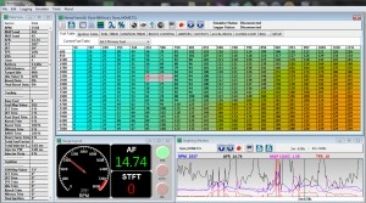
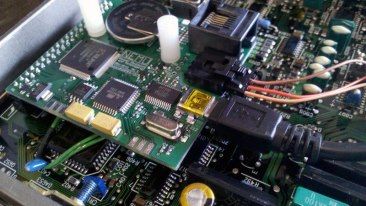
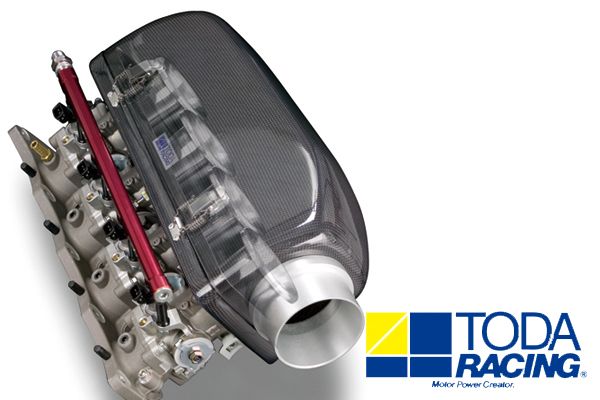

 Back to top
Back to top
